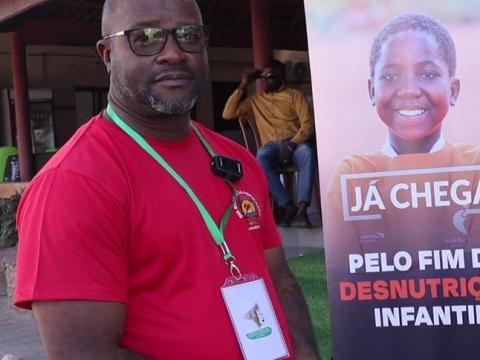Inspired by World Vision: District authorities pledge to replicate sustainable models to fight malnutrition

The International Conference on Malnutrition and Agrobusiness is already bearing some of the results planned namely a space for experience exchange that could replicate best practices to change the current narrative of high malnutrition rates in Mozambique.
As an example, the commitment by World Vision-Mozambique (WV-Moz) to eradicate the root causes of chronic malnutrition, by adopting sustainable models, is inspiring government authorities in Nampula province to take the lead and replicate evidence-proven practices amongst the communities.
Such is the sentiment of the District Administrator of Nacala-Porto, Morchido Momade, who foresees a positive impact of the “ENOUGH” Campaign (JÁ CHEGA, in Portuguese). This global initiative has pledged to contribute to reducing the incidence of chronic malnutrition in the next three years.
“In Mozambique, World Vision has proven the ability to create capacity within the communities for long-lasting results. This is what creates the conditions for ownership of interventions and for the passing of this knowledge through generations”, said the district administrator of Nacala-Porto.
Although WV-Moz currently does not have operations in Nacala-Porto, the District Administrator wants to replicate the models developed by the organization that have been functional in other contexts within Nampula province.
“We want to adopt some of the models developed by WV-Moz in our communities, like maximizing our available resources. If we invest in the child's wellbeing from the early days, combined with an improved diet based on locally grown crops, we can fight chronic malnutrition”, he added.
Improved health and nutrition for every child is at the core of WV-Moz's promise to contribute to the well-being of nearly 4 million of the most vulnerable children in the country by the end of 2025.
Mário Ernesto, who is WV-Moz Health and Nutrition Technical Manager, explained that the model the administrator is willing to replicate in his district is a strategy combining advocacy for behavior change while also working with faith leaders, community-based groups such as Health Committees and Health volunteers to increase access to interventions.
“This multisectoral group is promoting different options, like nutritional rehabilitation, which are cost-effective and can be perpetuated even in the absence of World Vision projects,” he explained.
The combined efforts of public authorities, civil society, and humanitarian agencies are even more required in Nampula province where, according to official statistics, 46.7 percent of suffers from chronic malnutrition, 2.9 percent have low birth weight, and 9.1 percent suffer from acute malnutrition.